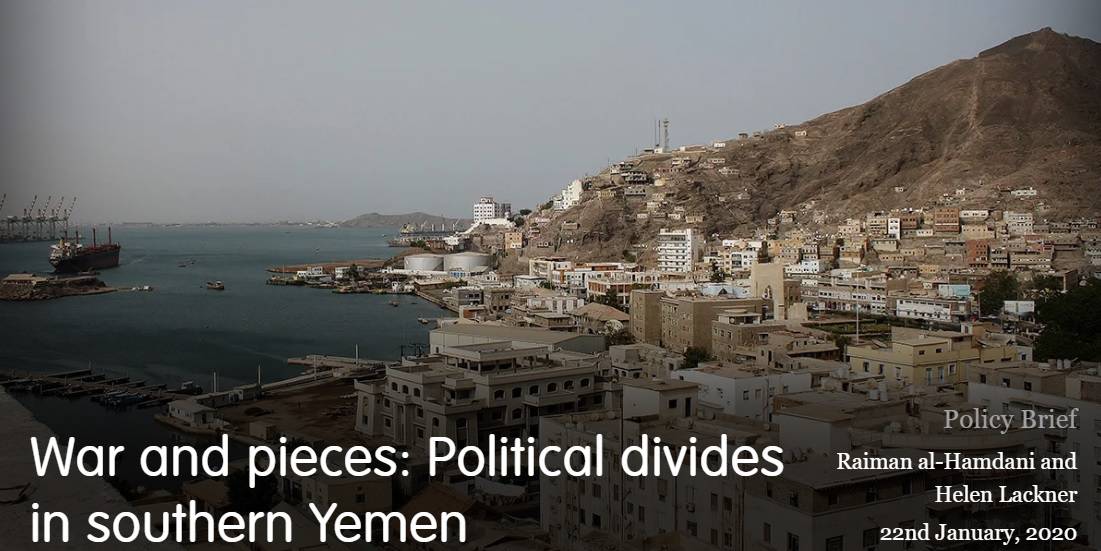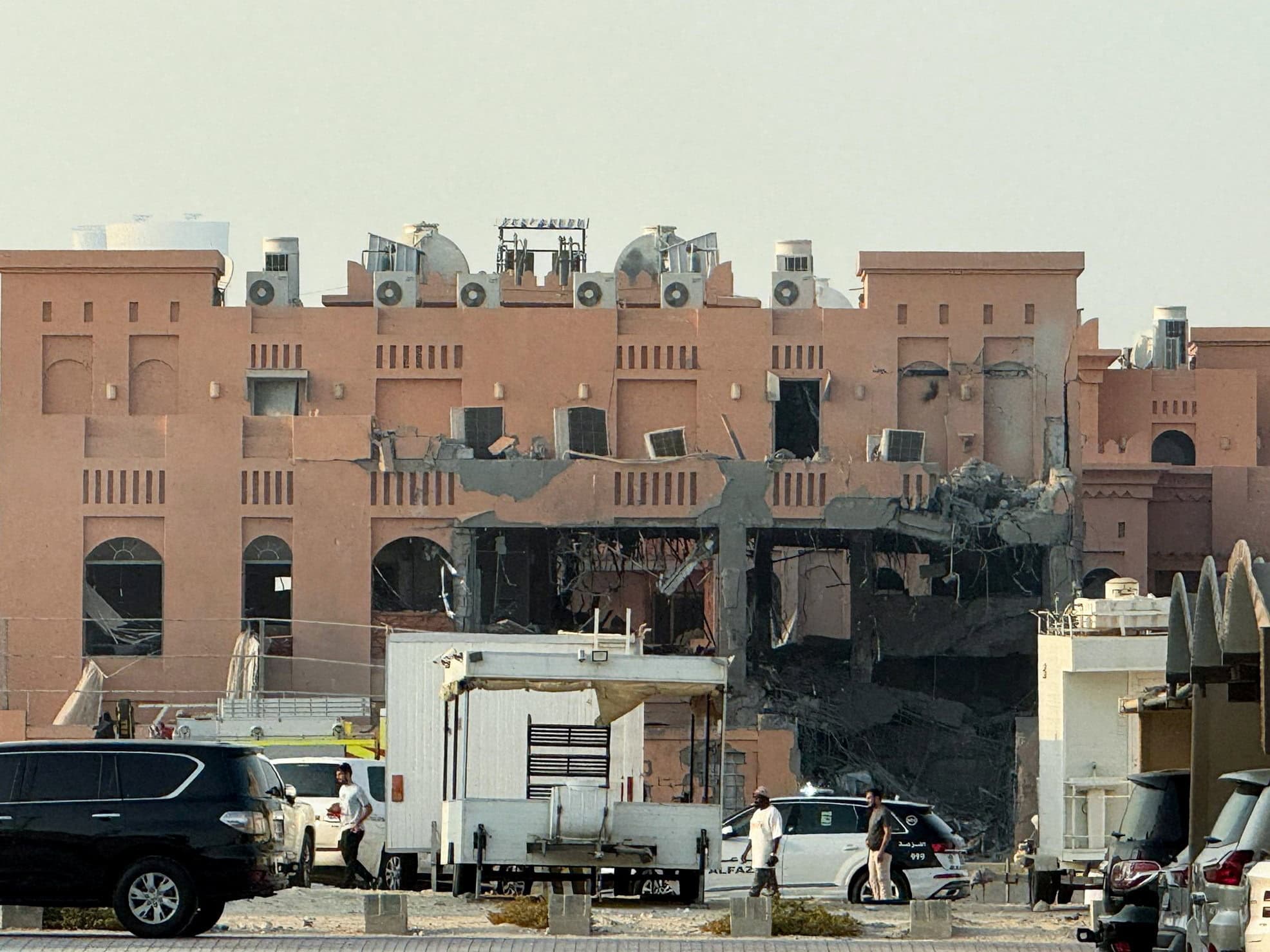
آخر تحديث في: 22-06-2022 الساعة 2 مساءً بتوقيت عدن
Berlin| The Southern Transitional Council (STC) has sent a letter to the European Council on Foreign Relations, in which it responds to the information provided in its last report "War and Pieces: Political Divides in Southern Yemen”.
The letter reveals what it said were "major mistakes made by the authors of the report".
The letter refuted the mistakes in the report and responded to many allegations.
Content of messages:
Mr Julien Barnes-Dacey, Director Middle East and North Africa programme, European Council of Foreign Relations
Comment on “War and Pieces: Political Divides in Southern Yemen”
February 16, 2020
Dear Mr Julien Barnes-Dacey,
We follow with great interest the work of the European Council of Foreign Relations and appreciate the high-quality reports and events of the council. Regrettably, we were unpleasantly surprised about the report by Helen Lackner and Raiman Al-Hamdani “War and Pieces: Political Divides in Southern Yemen” (January 2020). We would like to explain our concerns in the following.
The report lacks fundamental academic standards. We do not learn anything about the data the authors are using. If the report is based on interviews, the authors should mention from which political faction their interview partners speak. This would help to classify the arguments in the report.
The authors stick to old explanations that can be read in studies on South Yemen of the late 1980s, therefore, they have overlooked new tendencies and dimensions in South Yemen. This weakens the report enormously and creates contradictions in the report. The report endlessly repeats that the events in August 2019 in Aden and surrounding governorates brought forth similar fault lines that can be traced back to the war in the People’s Democratic Republic of Yemen in 1986. The authors state that “the alignments of the 1986 conflict largely overlap with the current rivalry between the IRG [internationally recognized government] and the STC [Southern Transitional Council]” (p. 25). The authors assert that Zubaydi and his allies opposed “Hadi’s faction in the 1986 conflict” (p. 9) and that the STC is the “successor to the group that went on to rule the PDRY for the remaining four years of its existence (but whose main leaders were killed in the process), mostly originating from the governorates of Lahij and Dhali’. On the other side, Hadi and many of his ministers have roots in the defeated faction whose members originated mainly from Abyan and Shabwa governorates – and who took refuge in Sana’a after their defeat in 1986.” (p. 6) People who are not from Lahij and Dhali’ are, according to the authors, only STC members “on paper” (p. 15). If the authors had used an approach to study the composition of the STC, they would have been instructed otherwise. The team composition of the STC’s EU office is only one example that disconfirms the authors’ argument. Furthermore, the authors do not take into account that the current leadership of the STC is a new generation that is well aware of past conflicts but has not been involved in the 1986 incidents. Therefore, the STC leadership cannot be seen as a stencil of the ‘Tughma’ (those siding with Abdulfattah Ismail) in the 1986 war.
The authors argumentation becomes inconsistent and contradictory when they enhance on the topic of Abyan. The authors mention Abd al-Latif al-Sayed, leader of the Abyani Security Belt Forces and say that he is “allegedly a former member of al-Qaeda” (p. 14). However, the authors do not mention that, since 2011, he had been leading the Popular Committees of Abyan in the fight against Al-Qaeda. The authors believe that al-Sayed “is loyal to his Gulf patrons” (p. 14) but do not see that he already before the STC emerged strove for southern independence. He is one of the many figures from Abyan who destructs the authors’ argumentation that South Yemen is divided between the 1986 factions (Lahij/Dhalia versus Abyan/Shabwa). The authors give sometimes a hint that the divisions in South Yemen are less based on historical and regional fragmentation than more on political positions (STC versus Islah (cp. p 14)).
The authors repeatedly assert that the Islah party “is strongest among low-status social groups” (p. 19). Many in the South were marginalized after unification and, especially, after the war in 1994. The institutionalized marginalization of state and army employees after 1994 concerned people regardless of their social background. The Southern Movement gathered many of the poor segments of society. The report lacks an understanding of grassroots dynamics in South Yemen. Elites are seen as prediction for general developments in South Yemen, however, these elites do not reveal much about grassroots, as only about themselves.
The report misses to explain the interlinkages between different southern groups, instead the report tries to highlight divisions. For example, strong linkages exist between the Hadramaut Inclusive Conference (p. 17) and the STC. The report conceals these relations and depicts the different groups as rivals to each other. The STC has not claimed to be the only southern representative for an independent state (cp. p. 1). If the STC claimed to be the only actor, there would be no reason for the STC to conduct a south-south dialogue with different southern groups. The south-south dialogue under the chairmanship of Ahmad Bin Bureik (Head of the STC’s National Assembly) was not mentioned by the authors.
The report conceals the efforts the STC made in uniting southern groups and individuals since its emergence. The STC is a result of overcoming internal fragmentation in the Southern Movement. Against this background, the allegation of the authors that the STC “has marginalised” (p. 11) other southern groups is untenable. The accusation that the STC “refused to participate in the latest internationally sponsored meeting designed to help southerners reach a consensus (held in Brussels in December 2019)” (p. 24) is not true. Due to the situation on the ground and the implementation of the Riyadh agreement, the STC postponed its attendance to the next round of talks.
At the end of the report, the authors get carried away by praising Houthi-rule. The authors claim that southern groups “have proven unable to overcome their factional rivalries or develop strategies that address the population’s social, economic, and political development problems. They offer no programme that generates support outside the region they represent and, therefore, are susceptible to foreign influence. While the south is torn between a multiplicity of diverging movements and separatist claims, the Houthis are running a tight ship in the areas they control, hoping to extend their governance model across the whole country.” (p. 26). The authors trivialize the fact that the Houthis rule the territories under their command with repression. The comparison between socialist rule in the PDRY and the Houthi-rule (cp. p. 26) is a derision of the social accomplishments made in the PDRY before 1990. The comparison is misguiding the multiple problems people suffer from Houthi-rule.
The authors predict that “[t]he policy of supporting Yemen as a unified state is important to prevent future strife, as the alternative is to allow the country to disintegrate into a multitude of mutually antagonistic, resource-poor micro-states – a phenomenon that would be particularly apparent in the south.” (p. 27) The authors disguise the fact that Yemen is suffering from this horrific war because of more than 20 years unification under the iron fist of President Salih. The authors’ solution is not very innovative by trying to solve the problem (unification and centralism) with the means that led to the problem. It is also not clear why exactly the south would become disintegrated into “a multitude of mutually antagonistic, resource-poor micro-states” (p. 27). The only functioning state that ever existed on the territory of the Republic of Yemen was the PDRY. In her book “P. D. R. Yemen: Outpost Of Socialist Development In Arabia” (London: Ithaca Press, 1985), Lackner has extensively outlined the accomplishments made during the PDRY. Thus, the authors should know better.
On page 23, the authors groundlessly accuse the STC to be behind the attack against more than 100 members of the Presidential Guards who were stationed at a military camp in Marib. The French linked article in the report does not serve as a proof for such an untenable assertion. In her article from February 3, 2020, Lackner further alleges that “tensions increased significantly when it emerged that the STC had previously removed their operational materiel away from Aden into its rural strongholds.” (ECFR)
We further found mistakes and inconsistencies in the report:
The claim that the Security Belt Forces and the Elite Forces are led by Salafis is not right (cp. pp. 10-12). The authors intermingle these troops with the Giant’s Brigades who are considered to consist of Salafis.
On page 14, the authors write that Abyan was taken over by extremists in 2012. This happened already in 2011 and ended in mid-2012.
On page 16, the authors mention the Yemeni parliament but forget to mention that it was elected the last time in 2003. The question is thus, how valuable the authors’ argument on the Islah’s strength in Wadi Hadramaut is.
The authors claim that “support for unification is common among many in the south” (p. 9). Reliable statistics do not exist, which could give a basis for this assertion. The mass demonstrations in support of independence in South Yemen predict the opposite.
The authors open a contradiction by saying “Hadhramis have already made it abundantly clear that they would not accept being integrated into a southern state along the pre-1990 borders” (p. 27). On page 18, they write “In Mukalla, the STC and Bahsani endeavour to remain on good terms with each other, as the city hosts the largest and most active STC presence in the governorate.”
The Southern Movement did not emerge in Dhali’ in 2006 (p. 14). It was initiated by the Association of Radfan in Aden in 2006.
Only on page 14 and 20, the name “Hirak” (Southern Movement) is mentioned. The authors consistently refer to “separatist movements” or “separatist groups”. A common academic practice would be referring to groups by their names instead of negatively connoted terms, such as “separatists”.
“Given the complex political, economic, and historical factors discussed above, the [Riyadh] agreement does not provide a holistic, long-term solution to either the southern question or to the Yemeni crisis as a whole.” (p. 24) The Riyadh agreement was not meant to solve the southern cause or the entire war in Yemen, or to replace the UN-led peace process.
The authors mention “xenophobic attacks against northerners in Aden” (p. 13) and “antinorthern prejudice in the south, which resulted in the ill-treatment of many people of northern origin and their expulsion from Aden and neighbouring governorates” (p. 8). The authors do not mention that the STC and the Security Belt Forces had published statements to prevent attacks against northerners. On August 4, 2019, the Security Belt Forces established emergency numbers to which any attack against northerners could be reported in order to prevent any attacks (Alhezam). In a statement on August 8, 2019, the STC states that it “takes seriously any reports of forced displacement or harassment of northerners, and neither the STC nor Southern forces are responsible for any such incidents.” (STC) In a statement on August 15, 2019, the STC ensures “the freedom of work and movement of the northern brothers in the capital Aden and all Southern governorates” (STC).
Yours sincerely,
The Southern Transitional Council in the European Union

قبل 3 أشهر

قبل 3 أشهر